Outer Sanctum: Jamie Durie creates the ultimate outdoor oasis
April 18th, 2010
When I take on the tough job of interviewing celebrities, I always hold my breath, wondering whether we’ll move past the PR-speak and begin to discover more about the person behind the famous face and name.
So when HGTV’s publicity department arranged for me to meet Australian media celebrity Jamie Durie, I was ready for the spin. And the good news is that he surprised me with his abundant knowledge and heartfelt passion for his landscape design projects. It was a very fun assignment.
Earlier this year I spoke by telephone with Jamie for an mini-profile that appears in the April 2010 issue of Garden Design magazine. Now that he is Los Angeles-based, we decided to try and meet in person so I could interview him for a Q&A to appear in the Los Angeles Times HOME section.
An edited version of my full interview with Jamie appears in today’s paper, but I wanted to share our extended conversation here.
A big THANK YOU goes to Eddie Ward of DRC Public Relations in New York. He did all of the legwork to set up my lunch appointment with Jamie on March 28th. Read on for the full transcript of my interview with Jamie:
A conversation with Aussie designer and HGTV star Jamie Durie
In Australia, Jamie Durie is a household name, television personality, head of PATIO, his Sydney-based international landscape architecture and design firm, and a one-man lifestyle “brand,” with product design and licensing deals for everything from eco-friendly house paint to outdoor furniture.
With HGTV’s launch earlier this year of The Outdoor Room with Jamie Durie (Saturday, 1 p.m.), a show he originally developed for Australian television, this charismatic design celebrity hopes to expand his reach to American audiences. Durie, 39, has appeared as the celebrity host of PBS’s Victory Garden since 2008 and is a regular gardening expert on Oprah.
But when HGTV (which is distributed to more than 98 million U.S. households) picked up two seasons of Durie’s half-hour, global-inspired garden makeover show, his potential for becoming the male Martha Stewart was sealed. Durie will host HGTV’s “Green Home 2010” special, premiering Sunday (April 18) at 8 p.m. ET.
Before Durie could sit down for an interview a few weeks ago (at his favorite L.A. breakfast spot, Joan’s on Third), he was politely accosted by some Aussie tourists who wanted to take photographs with him. Durie arrived for the appointment on his Kawasaki 600, which he swears is the best way to get around his newly-adopted city (he recently bought a mid-century fixer-upper in Laurel Canyon which he shares with Australian actress Sophie Scarf).
Q. I understand that before you studied landscape design you trained as a gymnast and had a stint in Las Vegas as founding member of Manpower Australia, an all-male review How does that background influence your current career?
A. I was very heavily based in the creative side of the show so I did all the set design and costume design and I worked with a lot of the theming, music direction and lighting design. I started performing with the show when I was 17 and finished when I was 24, so I was young enough to get out and start a new career. I went back to Australia and studied horticulture, landscape architecture and design. And I’ve never looked back.
Q. You’ve done a lot of television, including makeover programs in Australia. What’s new and different with The Outdoor Room?
A. The reason I created this show was to cast a wider net and reach the non-gardener. I want to encourage people interested in travel, architecture, design, food, or even fashion – and the show encompasses all that. It’s really just laced with gardens, which is the icing on the cake.
Q. It’s hard to believe that you accomplish as much as you do on The Outdoor Room, since makeover shows, especially garden makeover shows, seem more like theater than reality.
A. My gardens are not simple, but you throw 25 guys at a backyard and you’d be amazed at what can be accomplished in three days.
Q. Your producers are based in Los Angeles and so far, you’ve renovated only Southern California backyards. Is it your plan to continue creating episodes here?
A. As the show grows in popularity, we will start to come to other states in the U.S. It’s funny, HGTV said to me that they’ve never spent this much on a gardening show. And I have never spent this little. I realize that this show has to be accessible to a wide range of people. Not everyone can afford to put in a $100,000 garden, but everyone wants a $100,000 idea that they can achieve at a $1,000 price.
BEFORE: Tom and Elizabeth weren't blessed with green thumbs. Their barren, parched yard has zero living plants except one lone cactus. With one young son and three active dogs, they want a tough, hearty outdoor room that is easily maintained where both kids and dogs can play.
AFTER: Jamie takes a trip back to his native Sydney, Australia to be inspired by some of his past drought-tolerant designs. The Royal Botanic Gardens house one of the greatest collections of Australian native plants in the country, and Jamie's garden in the center of the succulents has fared beautifully in the rugged terrain. He is inspired by the abundance of species that don't require much care that will blend into the California climate such as cactus, tree ferns, kangaroo paws, xantheria that will all be used in Tom and Elizabeth's garden. From the stunning Mount Annan Botanic Gardens, Jamie takes away the idea for rammed earth walls. Not only are the walls sustainable, but when Jamie adds natural red oxide to the California dirt it creates an authentic Australian outback feel while adding a functional design element to a dog-proof backyard. Barn doors and rust paint give the couple's garage the feel of an Australian sheep-shearing shed and complete a true outback, down-under look in their outdoor lounge and play area.
Q. I’ve watched several episodes and it seems like the producers want to show the conflict between you and your two colleagues, horticulturist Beth Edelstein and carpenter Stephen Zimpel.
A. I’m a really good team player and in the new season they’re going to show more about us working as a team. Beth and Stephen are so talented in their own right and I have a great relationship with them. But when we first started shooting, it was crazy because [the producers] were asking me to create two gardens in one week, so I was bouncing back and forth a lot. Beth and Stephen were required to make decisions while I wasn’t around, and it was a real good testing ground for all of us.
Q. On The Outdoor Room, your landscapes are influenced by your travels to places like Bali, Bangkok and Kyoto. Yet your plant palette is primarily sustainable with Mediterranean and Australian natives. How do you blend these global and sustainable influences into a Southern California backyard?
A. I can work with any plant, and of course I will use Australian natives where appropriate. But I think we all need to be more intelligent about the plants we’re putting into the ground. You have to look at what grows naturally in your own area or neighborhood as an influence. Native plants, wherever you are, take less water and require fewer nutrients. And that allows us to build something that is sustainable. That’s a lesson for everyone here in California, and worldwide.
Q. What is your design approach?
A. The important thing is to design with shapes first, and then choose your plants. I try to get clients to convert every room of their house into an outdoor space. Study your lounge room or your kitchen. Walk outside and think to yourself, “How can I do that outside?” Because once you create an outdoor room, you’ll fall in love with your backyard again and you’ll start using it more.
BEFORE: Lauren and James bought their starter home with the help of Lauren's father, Fritz. Now they want to return the favor by turning their backyard dustbowl into a tropical paradise where Dad can come visit, garden, and hang out.
AFTER: Jamie visits Key West, Florida for inspiration to create two outdoor rooms- a lounge area and a dining room. From Calvin Klein's home, he takes away whitewashed timbers, bright hues of aqua and an old-fashioned hammock as well as the use of mirrors to create the illusion of space in a new and funky way. An orchid expert gives Jamie ideas for colorful splashes of fragrant flowers. Pastel-colored storm-guard shutters, a sunken eco-fire pit and tropical palms set right into the deck complete the island vibe and welcome visitors to kick off their shoes, grab a margarita, and watch the sun go down.
Q. You have numerous product design deals in Australia. Are you planning on introducing your brand to U.S. customers?
A. I’ve been working out of my home, but I’m about to build a new studio here in Los Angeles. It’s important for me to be seen as a designer and not just a landscape designer. I’m looking at designing everything from bathtubs and planter boxes to textiles and furniture. I just launched a line of all low-VOC paints under the Jamie Durie Signature. In Los Angeles, the paint is available at Sydney Harbor Paint Co. I also designed a signature stone-filled gabion planting bowl in two sizes – 7-ft. and 9-ft. diameter. You can see it in the window ofSolistone in L.A. They just sold one to a local developer.
Q. I’ve read that you’ve been commissioned to design a few L.A. projects, including Charlize Theron’s garden. How did you approach that project?
A. I believe Charlize first saw me on PBS. She’s got a great design sensibility and has been amazing to work with. I did a little bit of work on her beach home and then I started working on her city home. Charlize is big on sustainability, so she has made lots of really great environmental choices. Obviously, with her South African background, I chose a lot of South African plants, beautiful succulents and drought-tolerant natives.
Q. Australian native plants are so architectural and dramatic. Since you design with “shape first, plants second,” how are your design choices influenced by the forms, colors and textures of Australian native plants?
A. Australia has some of the most amazing native flora in the world. It is sculptural, robust, interesting and unique. Growing up in the harsh Australian outback surrounded by plants such as Grass Trees (Xanthorrhoea spp.) and Cycads (Macrozamia spp.) has influenced my design style in that I absolutely love bold, structural plants, I can’t get enough of them. They add drama and dimension to a space as well as being used as living artworks. It is impossible to not be influenced by the colors of many Australian native plants. I love the soft gray, olive and silver tones of many tough little Aussie plants. A combination I especially love is silver foliage against the rusted metal finish of a gabion bowl. These colors evoke memories of the Australian outback for me- the red sand, gray Eucalypts and bright blue skies.
Q. What are your favorite Australian native plants for the residential garden setting?
Some of my favorite Australian plants include:
- Kangaroo Paw (Anigozanthusspp.)
- Flowering Gum (Eucalyptus ‘Summer Beauty’)
- Dwarf Banksia (Banksia ‘Birthday Candles’)
- Weeping Lillypilly (Waterhousea floribunda)
- Vintage Red Eucalyptus (Eucalyptus cladocalyx ‘Vintage Red’)
Q. Has it been easy or difficult to source some of these plants here in Southern California?
A. No, its really easy to source Australian native plants in Southern California. In fact, L.A. has a similar climate to Sydney. This means that there is a huge variety of Australian native plants that are both suited to the climate and readily available. In fact, there are so many Australian plants in L.A.that I sometimes forget which country I am in!
Q. You have introduced some unique Aussie-inspired hardscape finishes and materials, such as the rammed earth walls. What other design ideas can Southern California gardeners borrow from garden owners in Sydney or Melbourne?
A. An element I incorporate in many of my gardens is the gabion bowl. This is a concept I have developed by taking a widely used and nearly invisible landscape element such as the gabion wall (used by engineers to stabilize roadside cuttings in Australia) and twisting it to form a sculptural object d’art. The bowls look absolutely amazing at night, uplit and overflowing with dramatic plants such as Cycads or Grass Trees etc.
In Australia we use a lot of metal finishes such as copper and rust for walls, pots, screens and planter boxes. A lovely copper pot will last for years and develop as the garden develops, eventually forming a lovely green patina that ages gracefully, just like the garden surrounding it. I love using different metallic finishes in unexpected places. A rust paint that goes on black, then oxidizes to form a lovely rusted finish is a great way to add texture and depth to an otherwise boring masonry wall.
In Australia it is all about working with the natural environment- using locally sourced materials, borrowing color schemes from the surrounding landscape and giving the garden a sense of place. Then we shake it up a bit. I love making unique spaces that excite people and make them want to go outside. I think that is a very Australian thing. We love our outdoor spaces and really want to utilize every last square foot of space.
BEFORE: Raymond and Petal love to entertain. Raymond is a baker and chef by trade, and he loves to cook up traditional feasts for up to 200 people in their Filipino community. The couple has given up on their huge backyard and thrown their hands up the air, and Jamie and team face their most challenging plot yet.
AFTER: In addition to an outdoor kitchen, dining and lounge area, they’d love a worry-free play space for their three young children. Jamie travels to majestic Thailand for inspiration. The foundation of Jamie’s design starts with the traditional rice terraces he discovers in the mountains of Thailand. But will Beth be able to re-create this look with a heartier plant that can survive in Petal and Raymond’s scorching backyard? Jamie visits a stunning roof top garden in the center of Bangkok that inspires him to create a lush rich look with tropical plants. A giant gold Buddha statue sparks a vision for a slightly smaller version as a focal point in Raymond and Petal’s backyard. Authentic nagas, or holy serpents, add traditional character to a pergola that sits over a huge triangular dining table with seating for 20. Lotus flower chandeliers and traditional Thai daybeds finish off this serene and peaceful outdoor room that has a little something for everyone.
Q. Can you talk about any other Los Angeles landscape commissions?
A. I’m working on some projects in Palm Springs, and I’m in conversation with several other actresses, but I can’t mention them because the projects aren’t confirmed yet.
Q. How do you juggle all these projects?
A. I enjoy keeping busy. All these things I’m doing are close to my heart. I’m still an environmental reporter for Sunday Night, an Australian prime-time journalistic show in the 60 Minutes format. They’ve been giving me these assignments that take me to amazing places. I just came back from Vanuatu where I spent seven days doing a story on volcanos.
Q. When do you start shooting again for The Outdoor Room?
A. I’ll be locked in here in Los Angeles for six months straight; from May to October they don’t give me one day off. They like to see us sweat. In fact, the network says ‘We want to see Jamie’s shirt off in this series,’ and I said good luck with that one – that was a whole other career.
–Debra Prinzing









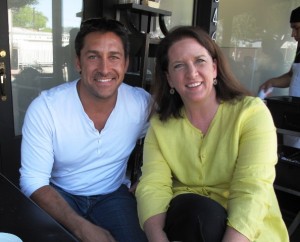
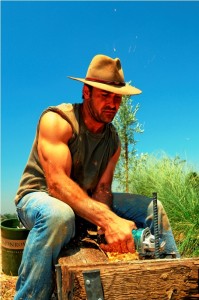
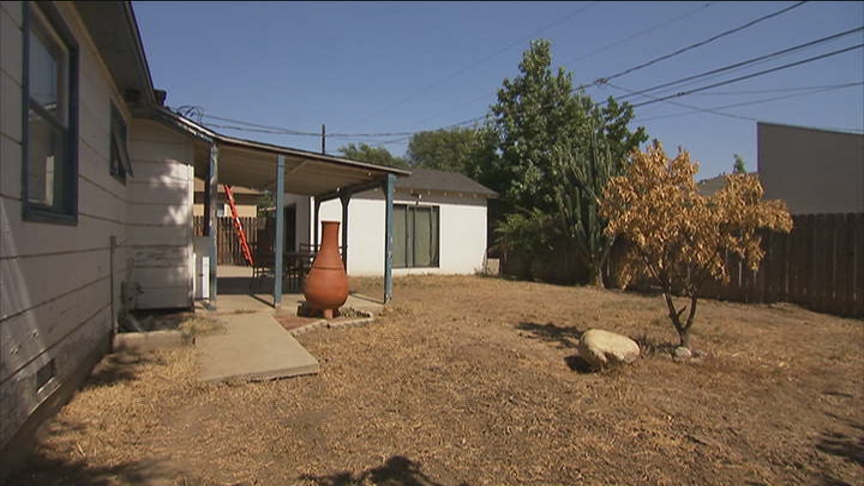
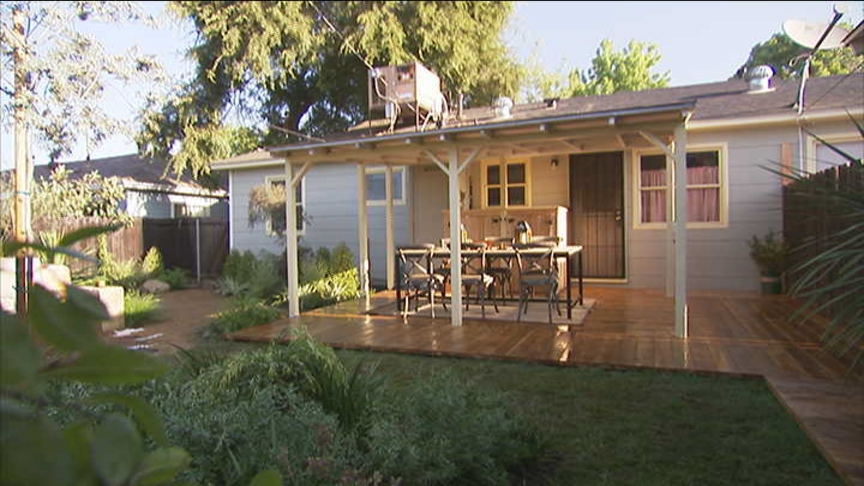
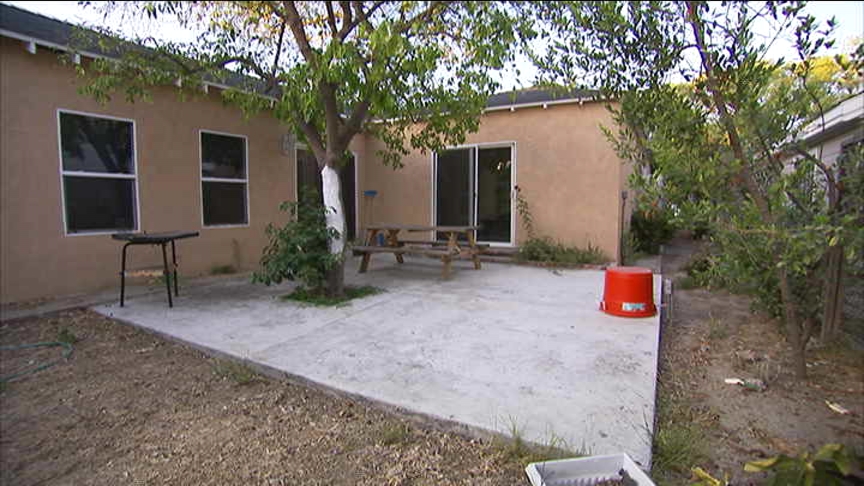
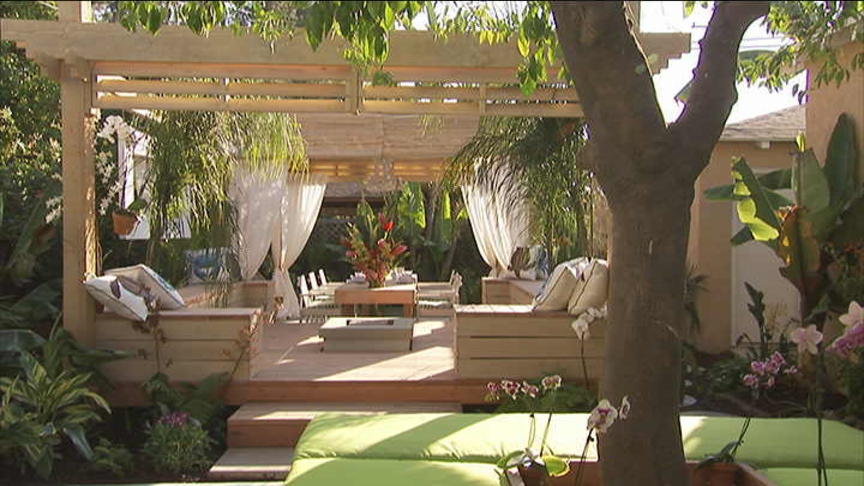
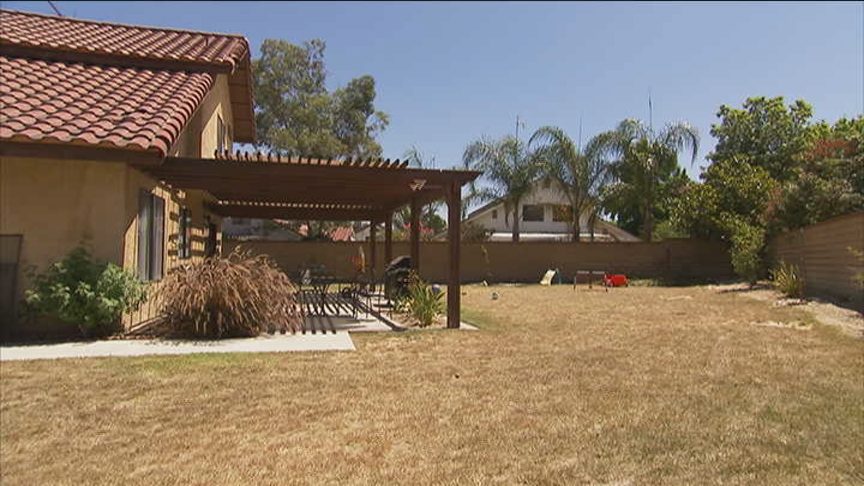
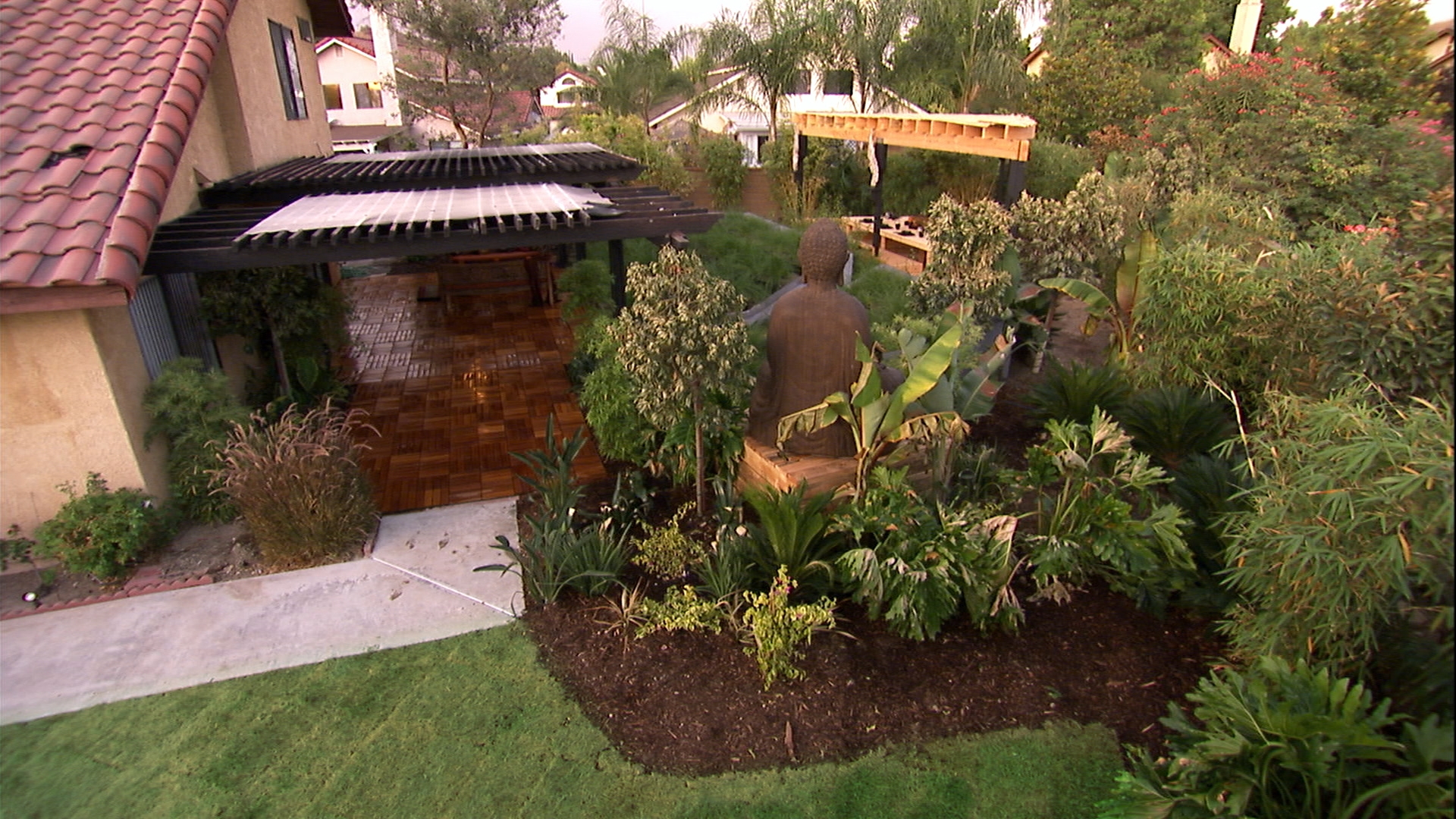
April 20th, 2010 at 7:36 am
oh my heavens — throw those 25 guys my way! this is fabulous.
love, paula
.-= paula panich´s last blog ..A Writer Writes, a Printmaker Prints, a Photographer Shoots =-.
April 23rd, 2010 at 11:10 pm
I’m in line right behind Paula.
May 2nd, 2010 at 8:05 am
Nice post,You discover something new each day.